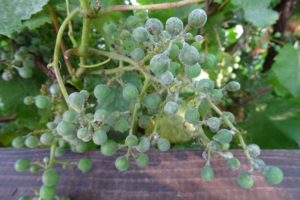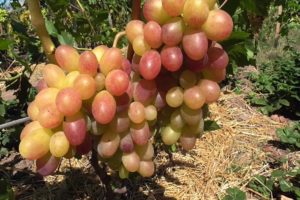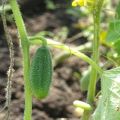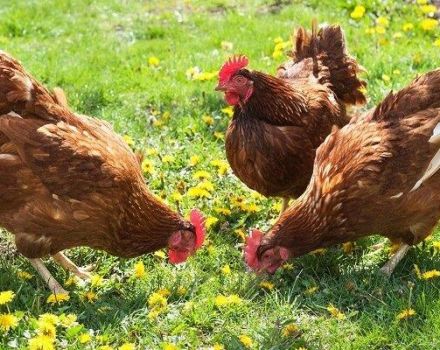How to grow grapes in the Leningrad region in a greenhouse and open field, planting and care
Gardeners in the Leningrad region know many subtleties about planting and leaving grapes. They harvest their crops earlier than the winegrowers of Crimea and the Caucasus. Success largely depends on the choice of the variety (hybrid form). In the short summer, only early-ripening varieties of culture have time to ripen. A short growing season practically excludes diseases, so most gardeners grow crops without the use of chemicals.
Growing features
In the Leningrad region, where summer is short, grapes grow not only in greenhouses. It can be grown outdoors without problems. The soils in this region are acidic, so ash and dolomite flour must be applied annually, starting from the year of planting.The vine begins to bear fruit 3 years after planting. The bunches gain more sugar if the grapes are grown in a well-lit area of the garden. They cover the vine only for the winter. Grapes are afraid of thaws and January rain.
The covering material is removed from the bushes immediately after the snow melts. A delay in harvesting polyethylene can lead to freezing of the shoots. The covered vine grows up until the onset of stable warm weather, return frosts are dangerous for it. Earlier, awakened grapes of any variety are recommended to be sprayed with immunity-enhancing agents at the threat of low temperatures:
- "Citovit", "Epinom", "Extrasolom";
- "Epin" together with "Ekofus".
After processing, the grape bushes are covered with a non-woven fabric (spunbond). To restore the frozen grape lashes are sprayed with the preparation "Zircon".
The best grape varieties for the Leningrad region
The winegrowers of the Leningrad Region have extensive experience. You can safely choose the varieties that they have already tried in their vineyards. It is worth planting proven, uncovered varieties with early ripening.
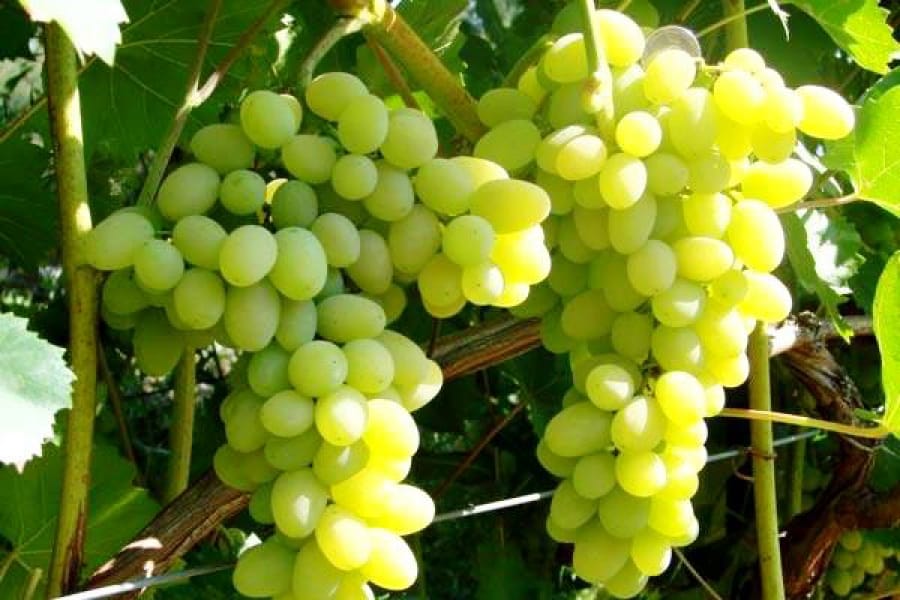
The Latvian hybrid Zilga is invariably popular. The bushes can withstand 30-degree frosts. Ripe bunches can hang for a long time without losing their presentation. There are no problems with pollination, the variety is self-pollinated.
Ripe berries take on a dark blue color, and notes of nutmeg are formed in their taste. One bush gives berries up to 12 kg.
Express Early endures frost up to 32 ° C. Dark ripe fruits contain up to 28% sugars, which explains their good taste. They make excellent homemade wines. The weight of one bunch can be up to 300 g. The crop is harvested from late July to mid-August. Productivity from bad weather does not decrease.
The frost resistance variety Supaga is suitable for the Leningrad region. Frosts down to -25 ° C are not afraid of him. The bunches are poured early, weighing from 300 to 600 g.Berries weighing up to 5 g have a simple taste without frills. Their color is amber. The variety has a weak resistance to phylloxera, but it is rarely exposed to rot, mildew, oidium.
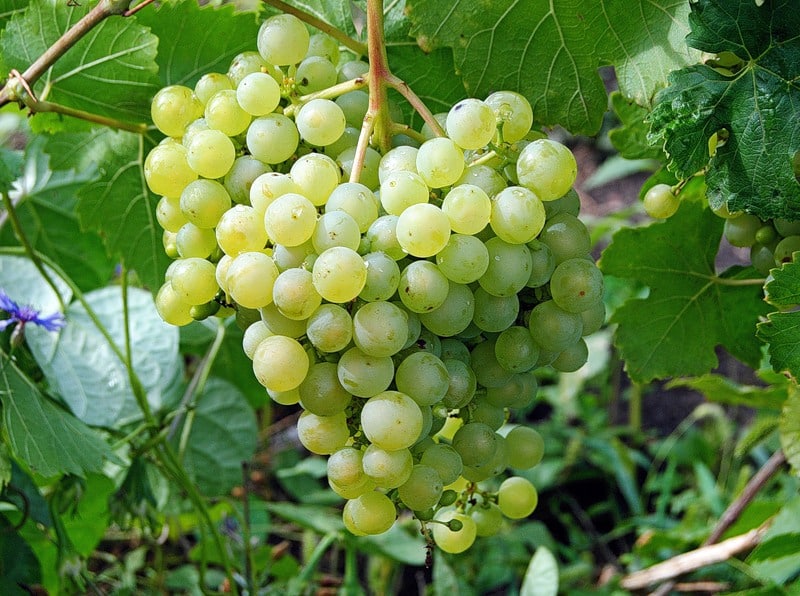
Cognac lovers plant Vandal Cliché. It is a wine variety from Canada. It ripens early, is very resistant to diseases, and is harvestable. The size of the berries is medium, the color is white, the aroma is apple-pear. Not quite ripe bunches are cut for wine. This removes Isabella's notes from the drink.
Early purple was bred in the Rostov region. Berries are used in many ways (wine, juice, fresh consumption). Bunches ripen in 130 days. They begin to harvest them in early September. The load on the bush is normalized. The berries are not large (up to 3 g), purple with a waxy bloom. They are collected in small clusters weighing about 200 g. The second wave of fruiting goes on stepchildren.
The hybrid form Veres was developed in Ukraine by V.V. Zagorulko. The grapes are seedless. They ripen early (90-100 days). Bunches are cone-shaped, large, weighing from 600 g. Muscat is present in the taste of the pulp.
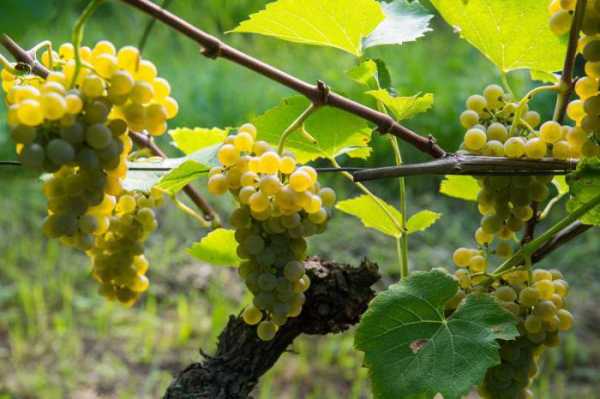
Solaris is a wine variety bred in Germany. Ripens early. Fruits are white, round, and contain up to 22% sugars in the pulp. The variety has good resistance to mildew, oidium, but the berries suffer from wasps.
The Black Pearl variety ripens in September. The size of the bunch is medium. The berries are dark blue, medium-sized, round-conical. The pulp has a pronounced aroma of nutmeg, the taste is harmonious and rich. Frost resistance at -26 ° C. Immunity to mildew, oidium in the variety is average.
Other varieties for open ground:
- Khasansky Sweet;
- Galant;
- Regent;
- First Michurinsky;
- P34;
- P33;
- Danko;
- Muscat Blau.
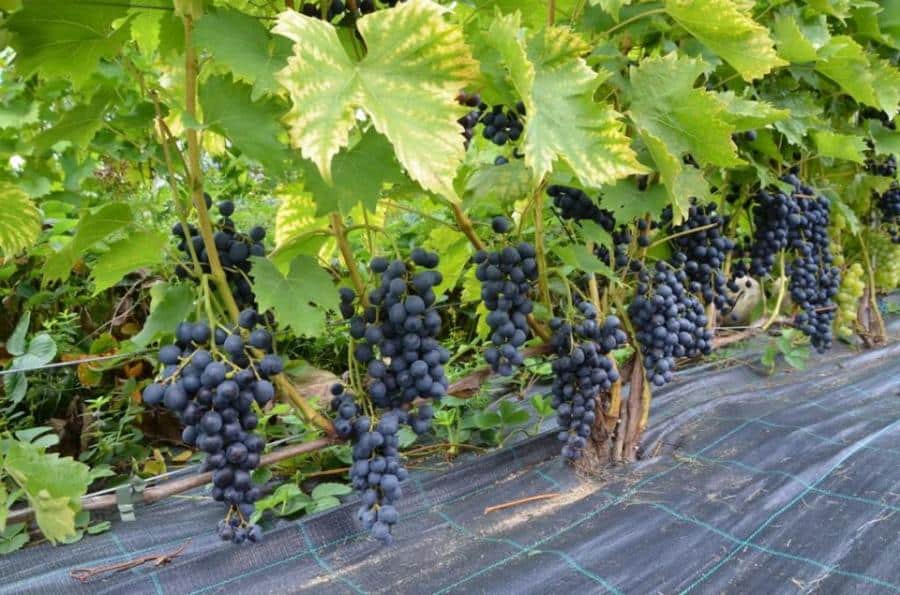
Other varieties are suitable for greenhouses. For example, near St. Petersburg they grow Laura grapes... This is the culture of dining. The clusters are large, conical, dense. The ripening period lasts at least 120 days. Good frost resistance (-23 ° C).
Radiant Kishmish is an old Moldavian variety, the bunches ripen for 130 days. It is also successfully grown indoors. Ripe berries are pink in color. The shape of the fruit is oval, elongated. There is a nutmeg flavor on the palate. The plant is susceptible to mildew, oidium.
Greenhouse or open ground?
Early varieties grow well outdoors. The main care for them comes down to pruning and covering the vine for the winter with cellophane. In the greenhouse, the berries ripen earlier, but from the observations of winegrowers, indoors, you have to spend time fighting pests and diseases.
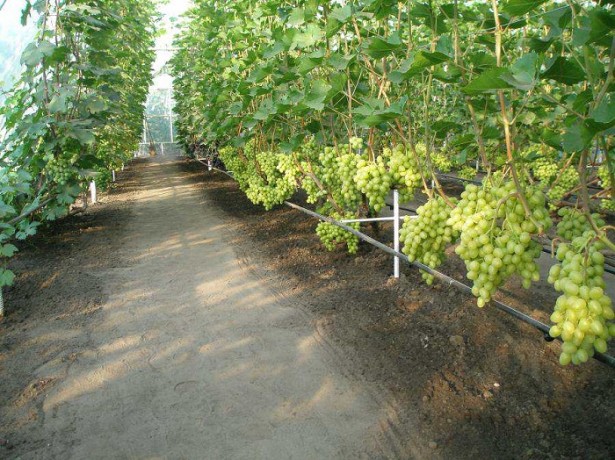
The berries of greenhouse grapes are more fleshy, large, ripen by mid-July. In the ground, the brushes are noticeably smaller, the berry is medium in size. In warm summer, the bunches ripen by mid-August, in the cool season by mid-September.
Cons of a greenhouse:
- there is less snow than outside, the soil freezes deeper;
- in the spring, due to early awakening, the vine may suffer from frost;
- for good growth and disease prevention, it is necessary to use chemistry (growth stimulants, fungicides);
- in the summer, you need frequent, abundant watering.
The pluses of greenhouse grapes include a wider list of varieties that can be grown in the conditions of the Leningrad region, and the ripening time. The berry picks up sugar 3 weeks earlier than in the open field. Supporters of an environmentally friendly harvest, simple maintenance, choose open ground.
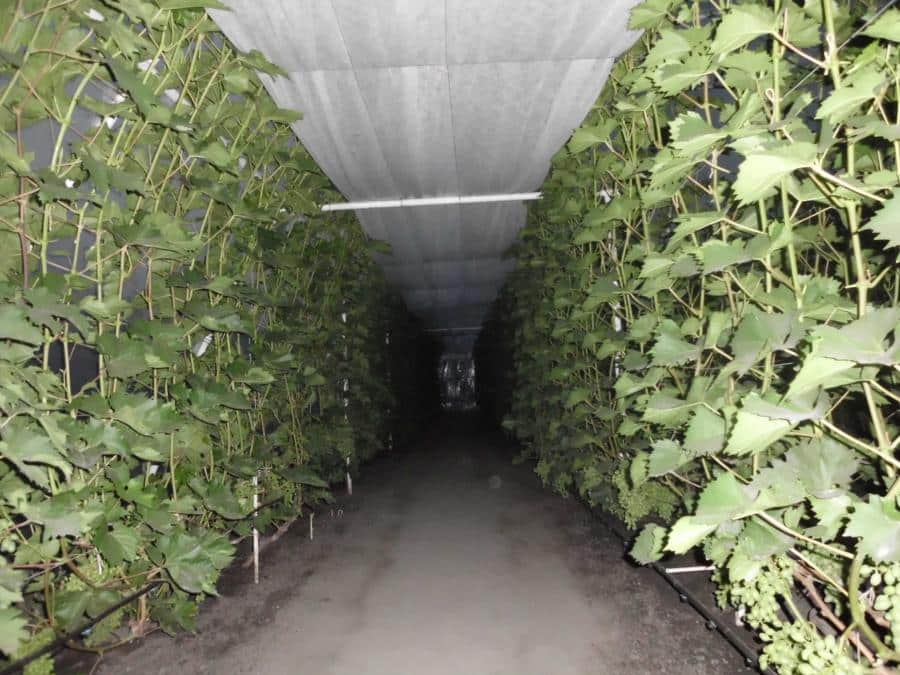
Timing and tips for landing
Plant grapes you need a pre-prepared site. One bush must allocate at least 1 m² of land - 2 x 0.5 m. A deep hole is not needed. It is enough to deepen it by 60 cm. In places with high soil moisture, drainage is poured on the bottom in the form of broken bricks, gravel, rubble.
In clay soil, the root system develops poorly, therefore, in addition to organic matter, mineral fertilizers, ash, sand is added to the soil mixture to fill the pit.Saplings are planted in the spring immediately after the soil has completely warmed up. In summer, the plant takes root, hibernates without problems.
In the summer months, seedlings with a closed root system can be planted; with good care, they take root no worse than grapes planted in spring. The vine growers of the Leningrad Region also practice autumn planting, but they huddle the seedling for the winter and cover it well.
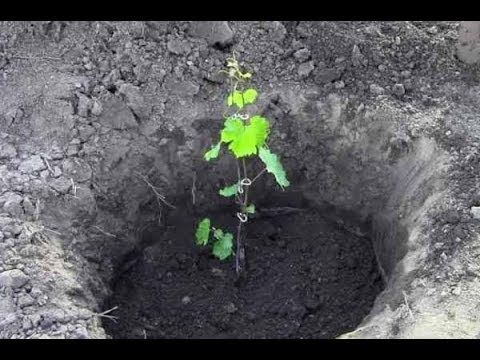
How to properly care for?
Formative pruning is a basic care element. It starts from the second year of the vine's life. Carried out in autumn throughout the life of the bush. After harvesting, almost the entire aboveground part is cut out. First of all, remove all sprouted shoots. The vine that has not ripened is also cut out. She still won't survive the winter. The main thing is to start forming the bush correctly. Winegrowers of the Leningrad Region are supporters of fan pruning. 4 sleeves are laid.
For autumn pruning, both methods are used:
- with a replacement knot;
- no substitution knot.
As a fruiting shoot, the most powerful branches with matured wood are selected, shortened by 5-6 buds.
After pruning, a small above-ground part remains; it is not difficult to cover it for the winter. Plastic arches are installed, cellophane is stretched over them. It turns out a tunnel, the ends of which are open. The shelter protects not from frost, but from thaws, which, due to the specifics of the climate, often occur in January.
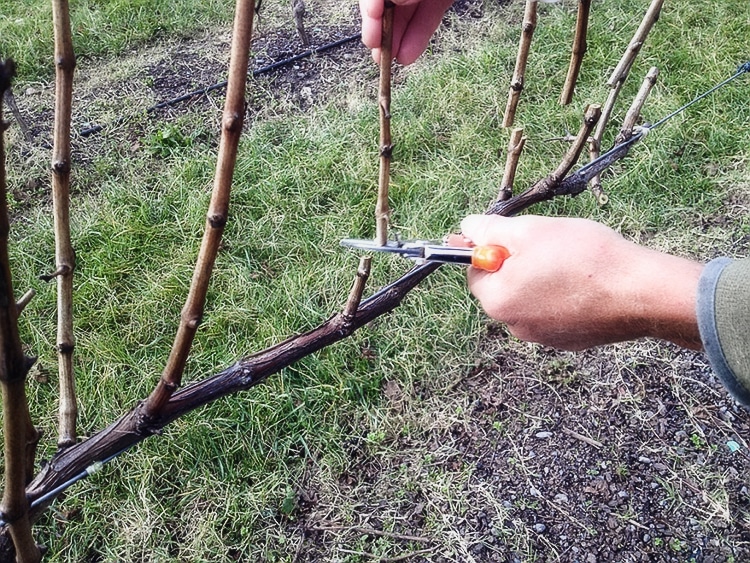
During the season, the vine is watered 4 to 5 times. In wet seasons, the amount of irrigation water is reduced. Starting from the 3rd year of life, they begin to make under the bushes:
- ash;
- dolomite flour;
- humus;
- mineral fertilizers.
Propagation of grapes
A new bush of the variety you like can be obtained using cuttings and cuttings. The latter are harvested in the fall during pruning. Completely lignified shoots are selected for reproduction. The core on the cut of the cutting should be green. Until the roots appear, the shoots are kept in water. For better germination, keep the room temperature between 20 and 23 ° C. Containers with fertile soil are prepared. Saplings are grown in them before planting in a permanent place.
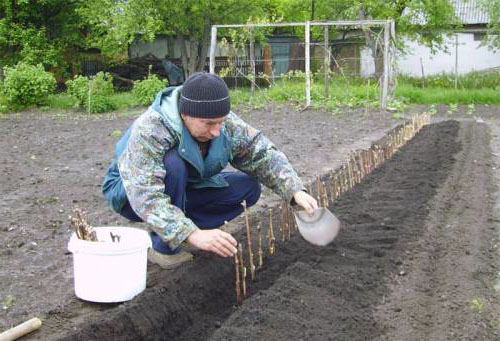
For layering in the fall, take a healthy lash, break out all the stepsons, remove all the leaves. The middle part of the shoot is sprinkled with fertile soil, leaving the crown above the ground. Grape shoots start growing the next spring. A new bush begins to form from the layer. It is separated from the mother bush after 3 years.
Diseases and pests
Most of the grape varieties grown in the Leningrad Region are disease resistant. It is not worth excluding their probability. Therefore, prevention of mildew, oidium, gray rot is needed. The topic of disease is especially relevant for greenhouse grapes. For the prevention of fungal diseases, the moisture level is controlled, the soil, shoots are sprayed with fungicides.
Of the pests, the danger is:
- spider mite;
- leaf roll (grape);
- grape itch;
- phylloxera.
They are also used for fungicides throughout the season. It is possible and necessary to do viticulture in the climate of the Leningrad Region, despite the short summer, to get decent harvests of berries. Success is achieved by gardeners who choose the right varieties, taking into account the peculiarities of the local climate when growing grapes.
